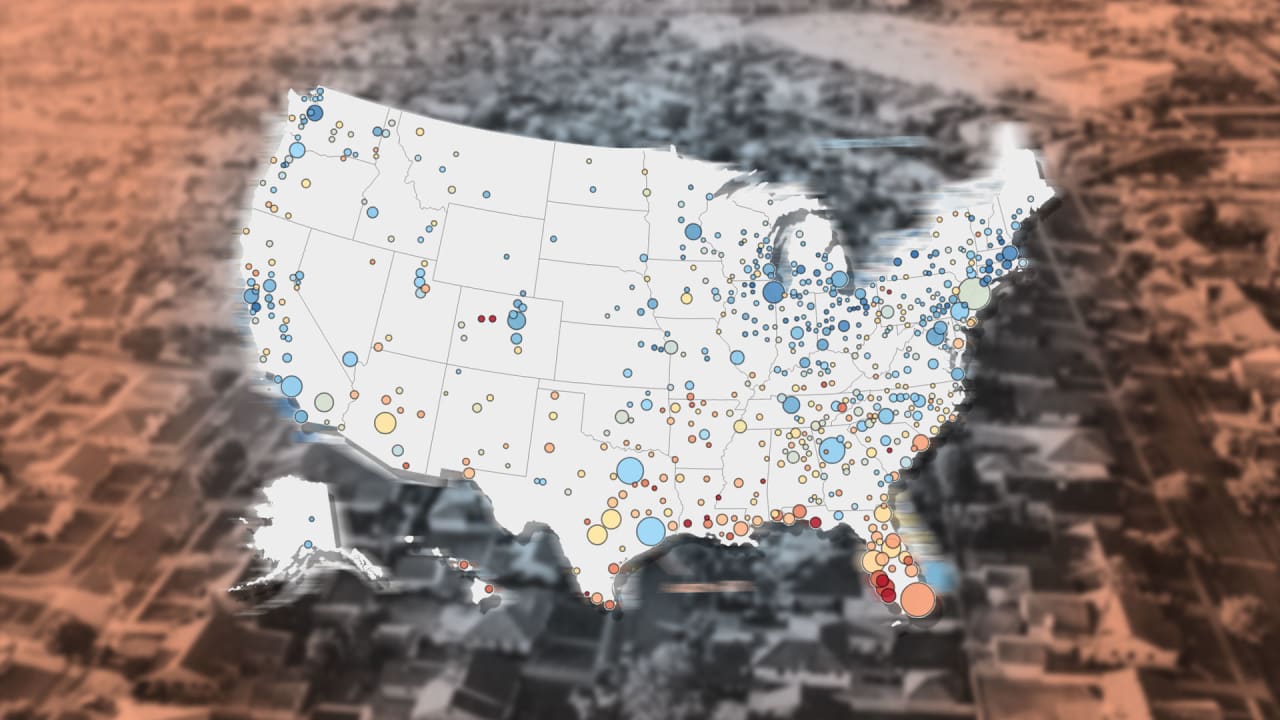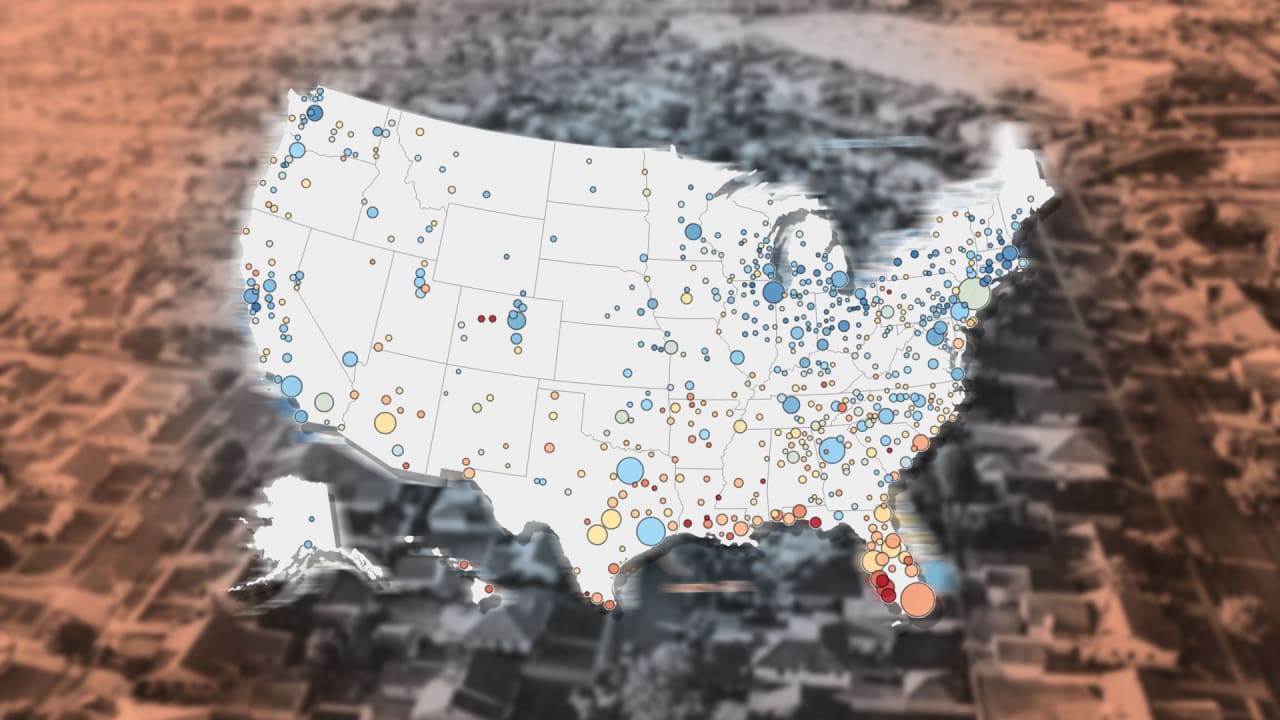
[ad_1]

Want more stories from Lance Lambert’s ResiClub in your inbox? Subscribe to the free, daily ResiClub newsletter.
To offer a better understanding and overview of the current resale housing market, we compiled a few interactive maps from a few of ResiClub‘s recent reports this month.
The big picture? There is growing weakness in some pockets of the Southwest and Southeast, particularly in Gulf markets and Florida, while many resale housing markets in the Midwest, Northeast, and Southern California still remain tight.
(For the best results, view these interactive/zoomable maps on a desktop.)
!function(){“use strict”;window.addEventListener(“message”,(function(a){if(void 0!==a.data[“datawrapper-height”]){var e=document.querySelectorAll(“iframe”);for(var t in a.data[“datawrapper-height”])for(var r=0;r<e.length;r++)if(e[r].contentWindow===a.source){var i=a.data["datawrapper-height"][t]+"px";e[r].style.height=i}}}))}();
Here’s how Realtor.com, the source from which we get the raw “days on market” data, defines it: “The median number of days property listings spend on the market within the specified geography during the specified month. Time spent on the market is defined as the time between the initial listing of a property and either its closing date or the date it is taken off the market.”
Regionally, there is much greater weakness around the Gulf, including much of Florida, while many markets in the Midwest, Northeast, and SoCal still have much fewer days on market.
!function(){“use strict”;window.addEventListener(“message”,(function(a){if(void 0!==a.data[“datawrapper-height”]){var e=document.querySelectorAll(“iframe”);for(var t in a.data[“datawrapper-height”])for(var r=0;r<e.length;r++)if(e[r].contentWindow===a.source){var i=a.data["datawrapper-height"][t]+"px";e[r].style.height=i}}}))}();
When assessing home price momentum, it’s important to monitor active listings and months of supply. If active listings start to rapidly increase as homes remain on the market for longer periods, it may indicate potential future pricing weakness. Conversely, a rapid decline in active listings could suggest a market that is heating up.
Most of the Midwest, Northeast, and West Coast remain well below pre-pandemic inventory levels. In contrast, many parts of the Gulf Coast, including Tampa and New Orleans, and the Mountain West have ticked back above pre-pandemic inventory levels.
!function(){“use strict”;window.addEventListener(“message”,(function(a){if(void 0!==a.data[“datawrapper-height”]){var e=document.querySelectorAll(“iframe”);for(var t in a.data[“datawrapper-height”])for(var r=0;r<e.length;r++)if(e[r].contentWindow===a.source){var i=a.data["datawrapper-height"][t]+"px";e[r].style.height=i}}}))}();
As ResiClub has documenting, certain markets, especially in the Northeast and Midwest, experienced home price growth over the past 12 months that exceeds the label “modest.” Meanwhile, home prices in specific areas in Texas, Louisiana, Mississippi, and Southwest Florida, have softened or even declined over the past year.
[ad_2]